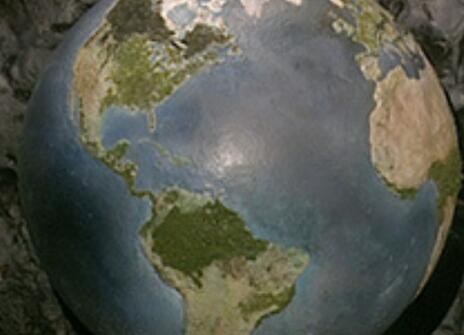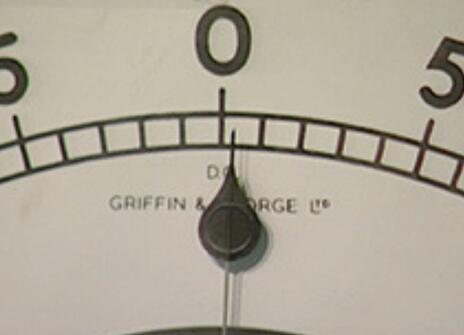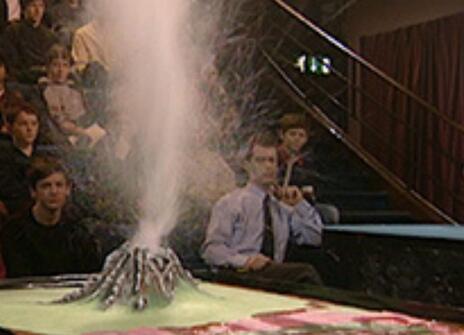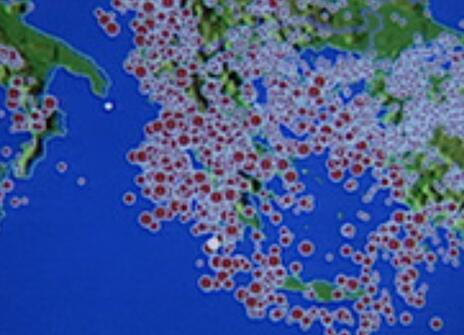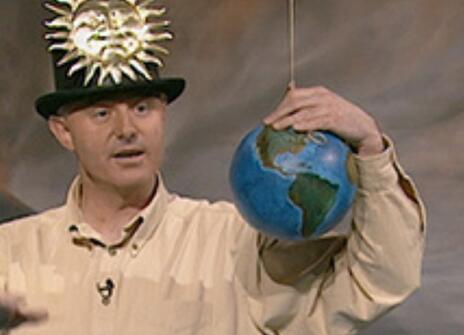Lecture 3 – Volcanoes: Melting the Earth
From the 1995 lecture programme:
Volcanoes are among the most dramatic features of the Earth, and a sure sign that the planet is alive. But what we see on land is only a small part of the story; far more is going on out of sight underwater.
In the middle of the oceans about twenty cubic kilometres of liquid rock is added to the seafloor every year to make new plates. This activity poses a major paradox. We know that the outer part of the Earth is solid because it rings like a bell in earthquakes. How, then, is it able to produce such quantities of molten rock?
Most volcanoes are located near the boundaries between the plates that cover the Earth, and the type of boundary provides a clue to what is going on. With submersible ships we can travel to where plates are created at mid-ocean ridges, where we find a seafloor belching clouds of superheated black water from chimneys — yet this dark, apparently inhospitable world is alive with creatures that never see the sun.
The runny magma that pours from the Earth where plates separate can flow huge distances on land and make spectacular displays of fountains and bubbling cauldrons of liquid rock. By contrast, the magma produced where plates converge is often much stickier and hardly flows at all; instead, it erupts in catastrophic explosions. Why should these magmas be so different?
Some volcanoes occur away from plate boundaries, at hot spots that occur above rising currents in the hot creeping rock that circulates beneath the plates. They are a useful reminder that the plates at the surface are only part of the story, and that much is hidden below. Occasionally a rising current below coincides with plate separation at the surface. The Earth can then produce fantastic quantities of lava, enough to bury whole continents to depths of a kilometre or two, with devastating effects for the environment and climate.
About the 1995 CHRISTMAS LECTURES
From the 1995 lecture programme:
We need to understand how our planet works. Catastrophes such as volcanic eruptions, earthquakes, climate change and sea level rise are starting to have a huge impact on our lives as our population increases and we colonise every available corner of the world, particularly the coastlines. Yet at the same time these phenomena, which are disasters to us, are a natural part of the way the Earth behaves.
We can use them as tools to see deep inside the Earth, to see how the planet is put together, and how it changes with time. Our understanding of how the Earth works has just undergone its biggest change since we realised that the Earth orbited the Sun. Scientists used to see the Earth as a planet whose surface had been the victim of random and unexplained events, such as mountain building and changing climate. Now we know that what we see at the surface is caused by vigorous motions deep inside the Earth — motions that are slow compared with our lifetimes, but are very fast compared with the life of the Earth itself. Far from living on a dead lump of rock in Space, we are living on jelly, but didn't realise it! These lectures trace the story of how and why our views changed — from a fumbling suspicion that continents had moved around, through a detailed reconstruction of how the pieces fit together, to the present, where we can measure the motions directly and see them going on. It is a story in which chasing a clue to one puzzle has often produced unexpected results and paradoxes.
Extraordinary leaps in understanding have come from the development of new tools — usually measuring instruments designed for purposes quite unconnected with their most famous discoveries. The Earth Sciences have come a long way from the Victorian image of a lonely geologist wandering the mountains with a hammer, so that measurements at the atomic or sub-atomic level can reveal the processes behind events as grand as ice ages. Nor are we restricted to our own planet: as we continue to explore the solar system and beyond we are discovering why the Earth is so special, and what series of accidents or processes have made it so suitable for us to live on. But the story does not yet have an ending: the Earth has a habit of letting us solve one puzzle only to make us realise it is part of an even bigger mystery we don't understand.
